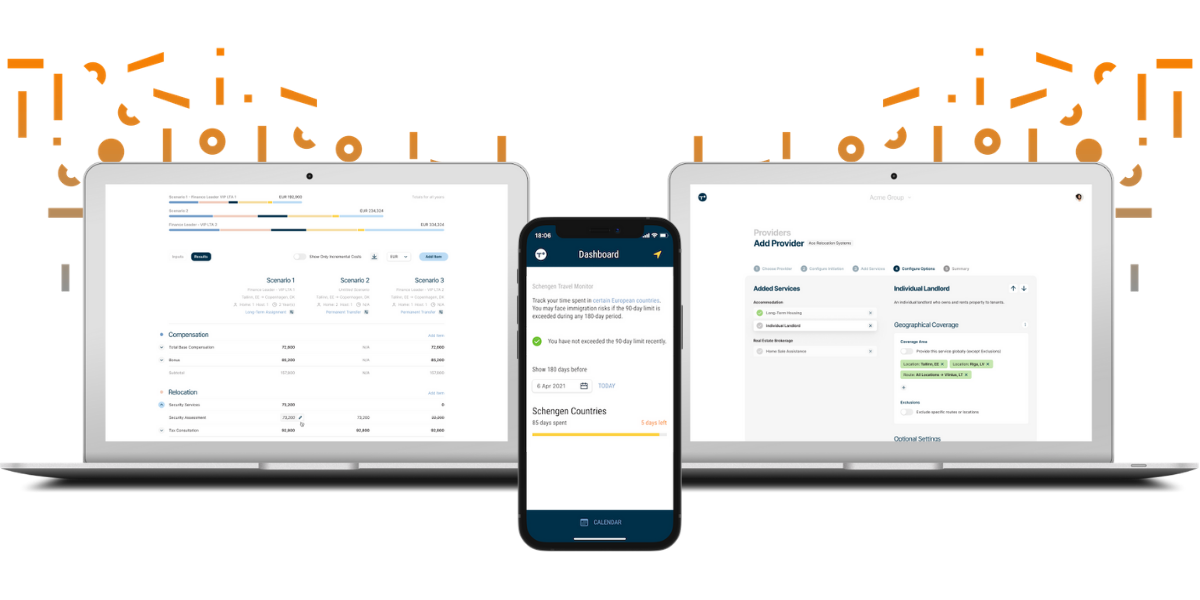
3 Best practices for resuming talent mobility during COVID-19
Many countries around the world have brought COVID-19 cases down to manageable levels thanks to proactive efforts such as contact tracing, successful quarantining, social distancing, and the adoption of mask-wearing. As organizations look to resume global talent mobility there are a few key considerations to keep in mind as it is widely expected that regions will “open” and “close” as case levels fluctuate up and down. Here are 3 best practices for resuming global mobility in a world still dealing with COVID -19. You can also learn more by watching our webinar recording on this topic at the bottom of the post.
1. Plan ahead
Planning ahead for every phase of the move will be key to protecting the employee and company.
Pre-departure – Review your policies to ensure they are robust & can cope with last-minute changes due to COVID. Check local regulations where employees are being deployed – can the move be completed? Ensure your ssignee (& their family) are fully prepared for the realities of relocating during COVID.
During the Move – Take all necessary safety precautions and build in a buffer for things to take longer and feel different. Be ready to address any issues quickly by making use of management data – ensure you have all the right controls in place.
On Assignment – Ensure there is a safe space for employees to work and engage in regular check-ins. Make use of local resources and be sure employees are aware of what’s available to them locally.
2. Prepare for differences in the typical process
Expect that every typical step along the mobility journey will be different for the employee and vendors. Here are some examples:
- Visa / Immigration – some countries may insist on additional requirements pre-departure
- Quarantine – The requirement in some countries to self isolate for a period on arrival at the host country.
- Service Delivery – Some services (for example Home Finding) may be affected by Social Distancing, such as moving to virtual tours.
- Increased Cost – Flights and Freight / HHG may be increased due to additional cost
- Service Shortages – Some services may not be available in certain countries due to restrictions imposed by the pandemic
- Additional Admin – Some countries may insist on additional compliance steps such as paperwork (with criminal penalty) is not adhered to. Ensuring employee compliance to not put you at risk
- Work From Home Arrangements – Planning a relocation to a country where the normal office resources are not available.
- Life Will Be Different! – The experience of living somewhere new will be shaped by the social differences of living under the pandemic conditions
3. Create a contingency plan for when things go wrong
It’s more likely than not that there will be hiccups in the process, that’s where having a contingency plan in place will be key.
Ensure your policy has a contingency in place to prepare for the unexpected:
- Increased time to complete moves
- Increased cost of moving (up to 50% of standard)
- Increased administration & paperwork
- Employee wellness
- Cover for illness & repatriation
- Business Continuation Planning
- Travel Intelligence
Key questions to ask yourself:
- Is your exception process robust enough to handle speedy decision making in case of an emergency?
- Do your employees have the necessary insurances / coverage in place?
- Can the business ensure it has the necessary funds to cover additional costs without being a bottleneck?
The key to planning successful relocations for the rest of 2020 and well into 2021 is to ensure moves are well planned & with a sensible contingency for unforeseen circumstances. For more on this topic, watch our recent webinar below.


